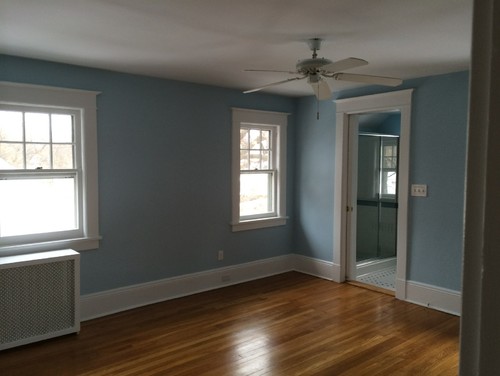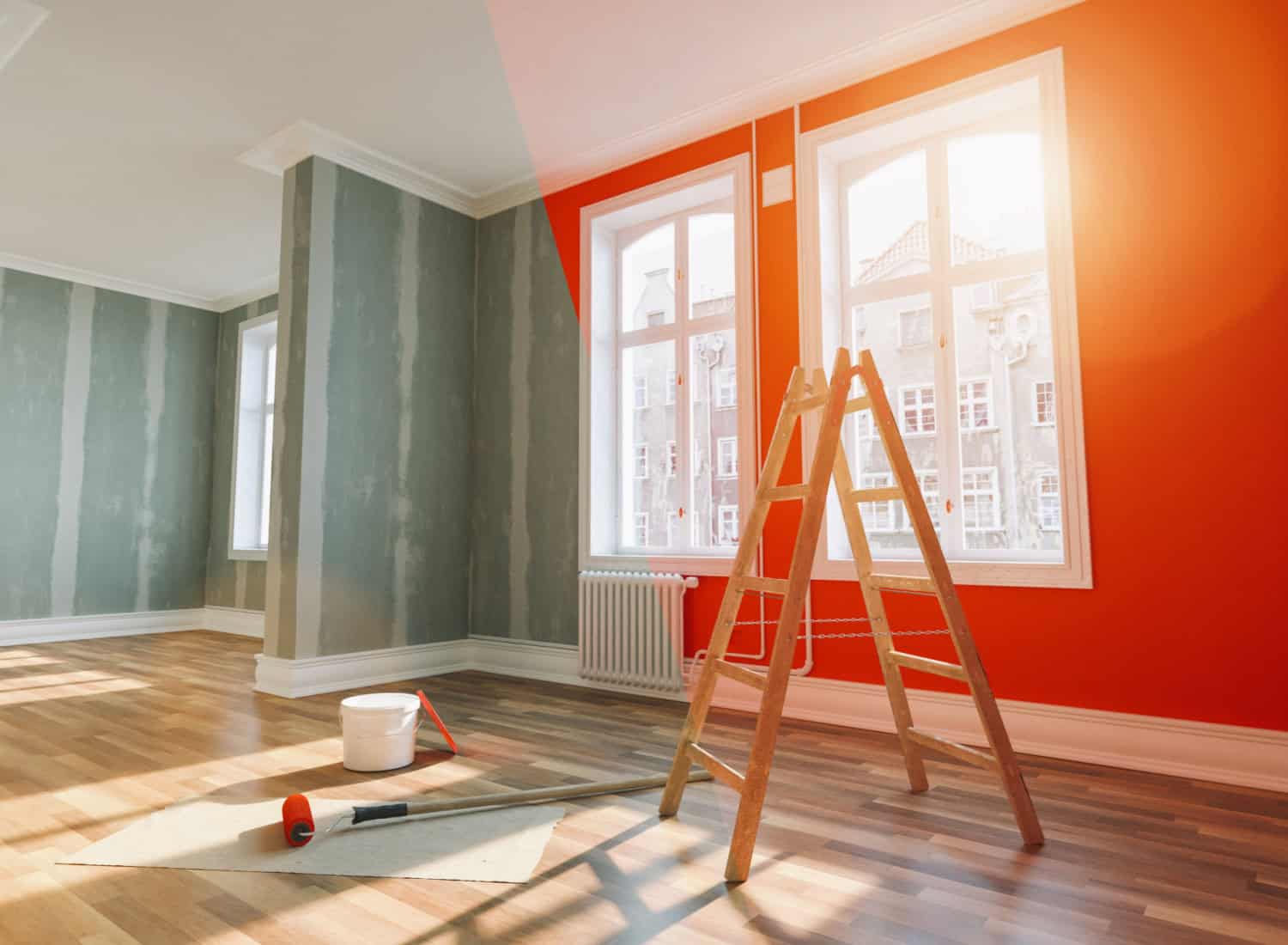Cleveland Metro Painting Specialists: Your Experts for Professional Painting Services
Cleveland Metro Painting Specialists: Your Experts for Professional Painting Services
Blog Article
Enhance Your Interior Decoration With Comprehensive Color Appointment
The integration of color consultation into interior style provides a distinct opportunity to fine-tune and elevate the emotional and visual resonance of a space. By engaging with a skilled shade specialist, you can navigate the complexities of color choice, guaranteeing that your choices not only complement building features however also resonate with individual design and emotional influence.
Advantages of Color Assessment

Additionally, shade appointment aids in making best use of all-natural light and enhancing spatial perception. Lighter tones can make an area show up even more expansive, while darker tones create an intimate setting. Cleveland Metro Painting Specialists. This calculated application of color can substantially influence the total atmosphere of any kind of interior area
In addition, expert experts have a comprehensive understanding of timeless classics and existing trends, making sure that the selected shades will continue to be appealing in time. This insight can conserve clients from expensive redesigns in the future. Color consultation encourages customers by providing them with a clear vision and direction, fostering confidence in their design selections and ultimately leading to an extra satisfying and effective interior style outcome.
Recognizing Shade Psychology
The relevance of color psychology in interior decoration can not be overstated, as it looks into the psychological and psychological results that different hues can evoke in people. Shades can affect mood, habits, and also performance, making them a crucial factor to consider in any kind of style project.
For circumstances, warm shades such as red, orange, and yellow are typically associated with power and warmth. They can promote feelings of enjoyment and convenience, making them appropriate for social rooms like living spaces or cooking areas. Conversely, trendy colors like blue, environment-friendly, and purple tend to stimulate calmness and serenity, making them ideal for bed rooms or reflection areas.
Furthermore, the usage of neutral tones can create a well balanced setting by allowing the bolder colors to attract attention without overwhelming the senses. Comprehending these emotional impacts allows developers to develop spaces that not only look visually pleasing yet also promote psychological health.
Incorporating color psychology right into interior decoration includes a thoughtful choice of hues tailored to the designated feature of each room, ultimately enhancing the general experience for its owners. This awareness is important for accomplishing a unified and useful indoor environment.
The Color Wheel Explained
Comprehending the connections between shades is necessary for efficient indoor style, and the shade wheel acts as a useful device in this process. The color wheel, developed by Isaac Newton in the 17th century, illustrates the spectrum of shades prepared in a round layout. It comprises primary colors-- red, blue, and yellow-- that can not be produced by blending other colors. Second colors, formed by integrating primaries, consist of eco-friendly, orange, and purple. Tertiary colors result from blending a key and an additional color, resulting in shades such as red-orange and turquoise.
The shade wheel helps designers grasp the connections in between colors, consisting of complementary, similar, and triadic schemes. Corresponding shades, positioned contrary each various other on the wheel, produce vivid contrasts that can energize an area.
Utilizing the color wheel in interior decoration not only boosts aesthetic charm yet also evokes details emotions and environments, making it an essential recommendation for shade assessment. Comprehending these partnerships ultimately equips developers to develop spaces that are both functional and aesthetically exciting.
Selecting the Right Palette
An appropriate shade plan can combine an area, improve its features, and evoke desired feelings. Various rooms offer different functions and require palettes that mirror their desired usage; for instance, peaceful colors such as Continued soft blues or greens function well in bed rooms, promoting relaxation.
Next, consider the all-natural light offered. Light can considerably change exactly how colors show up, so it is important to examine the space at different times of the day. In addition, take into consideration existing architectural elements and home furnishings. An unified palette should enhance these functions, creating a natural look throughout the space.
When choosing shades, use the 60-30-10 rule, which recommends that 60% of the space must be a dominant shade, 30% a secondary shade, and 10% an accent color. This ratio makes sure balance and aesthetic interest (Cleveland Metro Painting Specialists). Ultimately, sample colors on the wall surfaces prior to dedicating, as this permits you to see just how the hues communicate with one an additional and the general atmosphere they create in your indoor design job.
Functioning With a Color Expert

When collaborating with a shade professional, the procedure typically begins with an initial consultation. During this meeting, you'll review your vision, choices, and the existing components in here are the findings your room. The expert will certainly examine your requirements and may recommend particular color palettes that straighten with your objectives.
After developing a direction, the specialist you can check here will give examples and aesthetic aids to help you envision the recommended color pattern. This step is crucial, as shades can show up in a different way under varying lighting problems.
Furthermore, a color consultant can lead you in choosing complementary home furnishings, art work, and accessories to integrate with your picked combination. By collaborating very closely, you can accomplish a refined visual that boosts your interiors and develops an inviting ambience. Inevitably, the knowledge of a color professional can significantly enhance the overall impact of your design job.
Final Thought
In recap, detailed color assessment acts as a crucial device for improving interior decoration. By leveraging expert understanding of color psychology and spatial characteristics, a tailored color scheme can be established to stimulate particular feelings and create an unified environment. This calculated approach not only cultivates a cohesive style story but additionally mitigates the danger of pricey redesigns. Ultimately, involving with a shade consultant makes sure an informed and visually pleasing end result, elevating the overall experience of the area.
By involving with a skilled shade consultant, you can navigate the complexities of color choice, making sure that your selections not just complement building functions however additionally reverberate with individual design and emotional influence. It consists of key shades-- red, blue, and yellow-- that can not be created by blending various other shades.The shade wheel aids developers realize the partnerships in between shades, consisting of corresponding, comparable, and triadic plans.When choosing colors, use the 60-30-10 guideline, which suggests that 60% of the space should be a dominant shade, 30% a second shade, and 10% an accent shade. By leveraging professional understanding of color psychology and spatial characteristics, a customized shade combination can be established to evoke specific feelings and develop a harmonious atmosphere.
Report this page